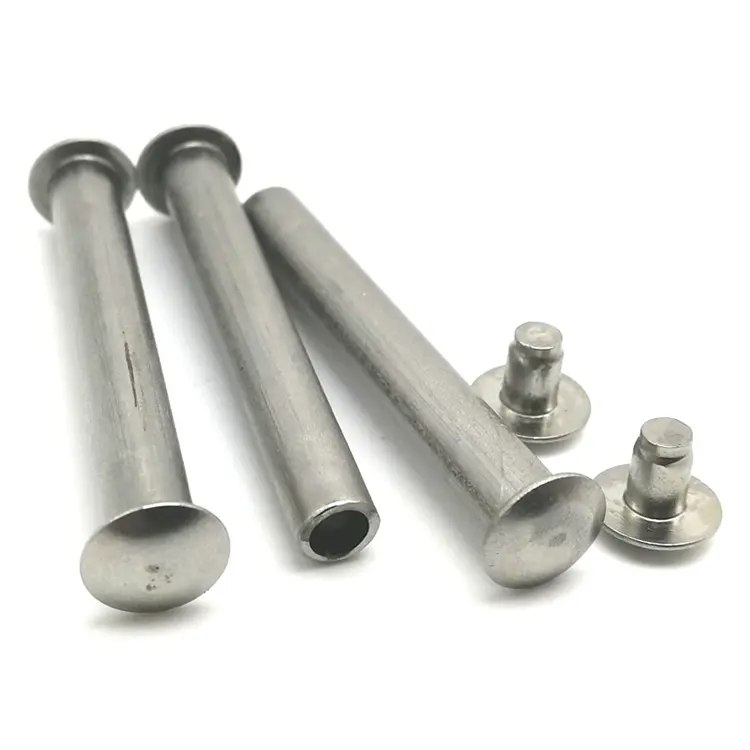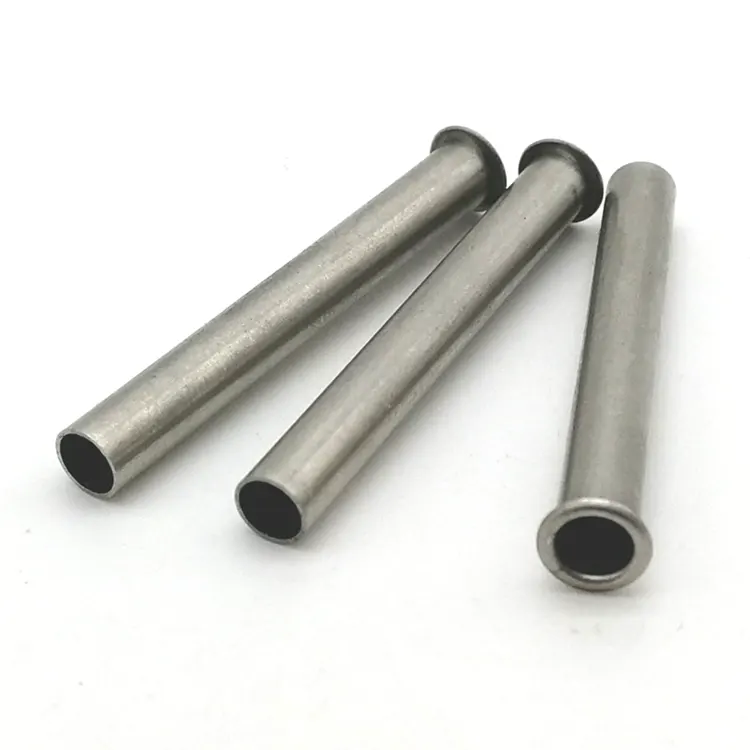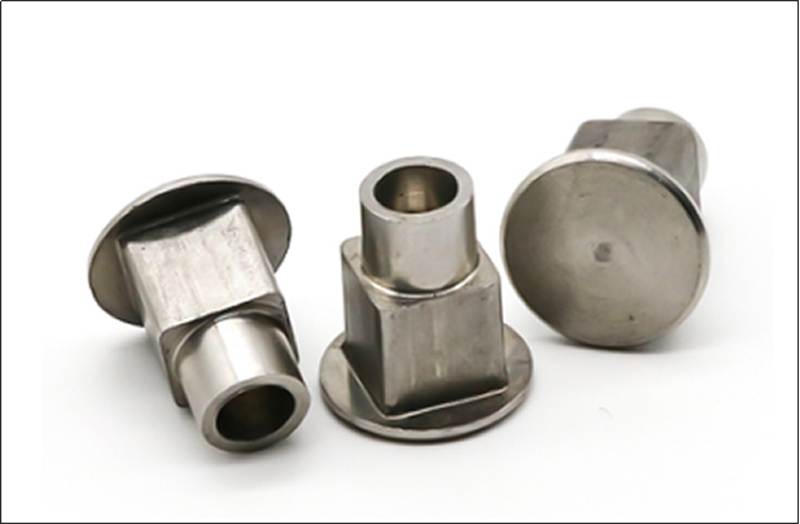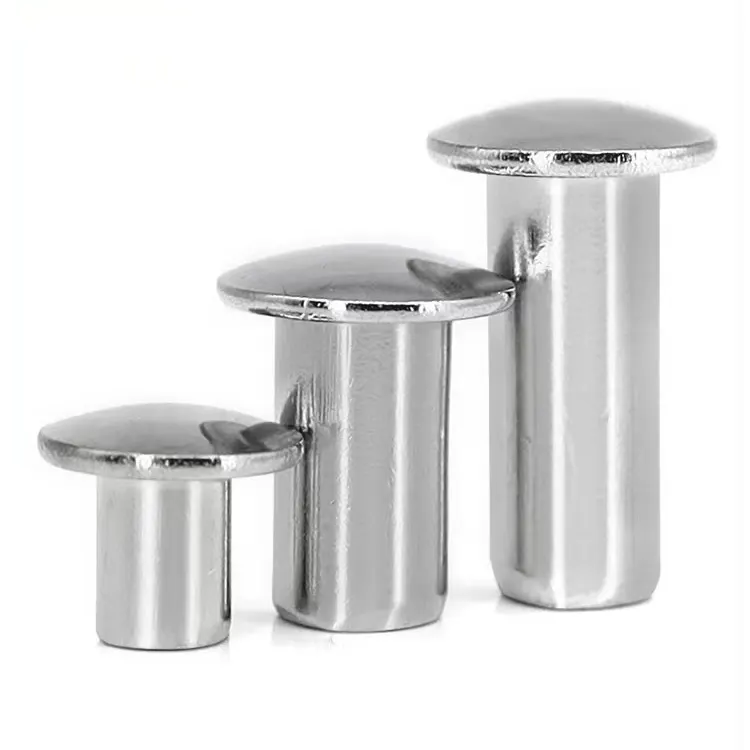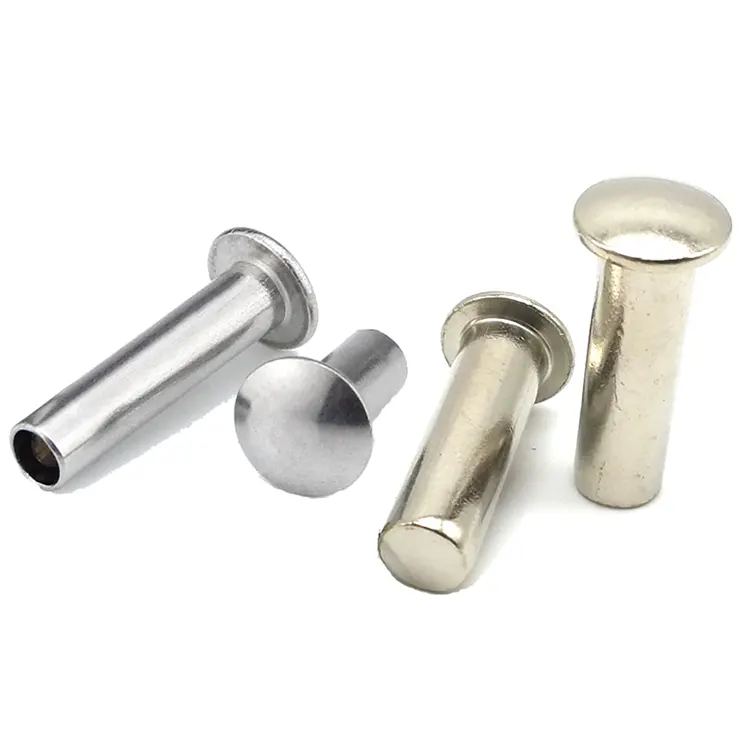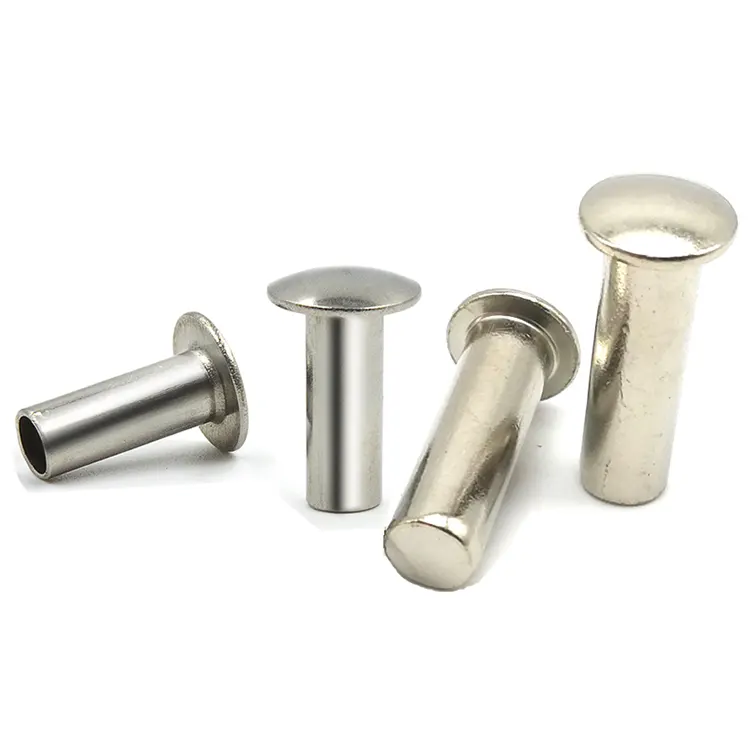Erikoisjuhlat
One of Chinese manufacturer of Special Rivets, offering excellent quality at a competitive price, is Notin. Feel free to get in touch.
In the field of mechanical manufacturing and assembly, rivets are a common fastener used to professionally connect two or more parts. According to the degree of standardization, rivets can be divided into two categories: standard rivets and non-standard rivets. The size, shape and material of standard rivets are uniformly specified, while non-standard rivets are customized according to specific needs. The following will introduce the characteristics and applications of non-standard rivets from multiple aspects.
What are non-standard rivets?
Non-standard rivets are also called special rivets. They refer to rivets that do not meet national standards or industry general standards. Their size, material, structure and other parameters are designed and manufactured according to the specific needs of customers. Due to the different connection requirements of different industries and equipment, standard rivets may not meet the requirements of certain special scenarios, so non-standard rivets came into being.
What are the characteristics of special rivets?
(1) Strong customization: Non-standard rivets can be personalized according to factors such as the use environment, stress conditions, and assembly methods to ensure that they perform well in actual applications.
(2) Diverse materials: In addition to common carbon steel and stainless steel, non-standard rivets can also be made of special materials such as aluminum alloy, copper alloy, titanium alloy, etc. to meet different corrosion resistance, strength and weight requirements.
(3) Flexible structure: The structure of non-standard rivets can be adjusted according to needs, such as head shape, stem diameter, length, etc., and can even be designed to be hollow, semi-hollow or other special shapes.
- View as
Universaalipään niitit
Yleispäinen niitti on eräänlainen mekaaninen liitoskomponentti niitin luokitusjärjestelmässä. Sen pää on litteän kaaren muotoinen ja sopii materiaalien, kuten ohuiden metallilevyjen, nahan, kankaan ja puun, liittämiseen. Tämäntyyppiset niitit kiinnitetään kylmä- tai kuumaniitausprosesseilla, ja sen etuna on helppo asennus ja kustannustehokkuus tiivistetyissä painelaakereissa ympäristöissä. Verrattuna vastaaviin tuotteisiin, kuten upotettuihin niitteihin, yleispään niitit sopivat paremmin ohuiden metallilevyjen tai ei-metallisten materiaalien, kuten nahan, kankaan ja puun, niitaukseen ulkonevan puolipallomaisen päänsä ansiosta.
Lue lisääLähetä kyselyKaksiosaiset niitit
Kaksiosaiset niitit koostuvat tyypillisesti kahdesta osasta: naarasniitistä ja urosniitistä. Naarasniitissä on sisäreikä toisessa päässä ja kiinteä pää toisessa. Uros niitti, kuin kiinteäaskel niitti, sopii naarasniitin sisäreikään. Käyttöä varten kiinnitä naarasniitti ensin johonkin esineeseen, työnnä sitten urosniitti naarasnittiin ja vasaralla se paikoilleen yhdistäen näin kaksi esinettä. Tämä rakenne yksinkertaistaa asennusta ja tarjoaa luotettavan liitännän lujuuden. Nuote Metalsilla on 10 vuoden työkokemus tällaisista kaksiosaisista niiteistä, tervetuloa lähettämään meille piirustuksesi.
Lue lisääLähetä kyselyRistikon pään niitit
Nuote Metals valmistaa ja myy ristikkopään niittejä. Sijaitsemme Dongguanissa, Kiinassa, ja meillä on yli 40 kylmäsuuntauskonetta, jotka pystyvät tuottamaan laajan valikoiman niittimäärityksiä ja -tyyppejä. Tarjoamme myös räätälöityjä niittejä. Ristikon pään niitit ovat yleinen niitattu komponentti, joka koostuu varresta, päästä ja hännästä. Niille on ominaista suuri, litteä pää ja ontto tai kiinteä häntä, jotka tarjoavat erinomaiset tiivistys- ja vedenpitävyysominaisuudet.
Lue lisääLähetä kyselyTeräksiset pyöreät niitit
Nuote Metals valmistaa ja myy teräksisiä pyöreäpäisiä niittejä erilaisilla viimeistelyillä, mukaan lukien sinkitys, nikkelipinnoitus ja Dacromet-pinnoitus. Pyöreäpään niiteillä on puoliympyrän muotoinen pää, joka tarjoaa erinomaisen veto- ja leikkauslujuuden ja kestää raskaita kuormia. Pyöreän pään ansiosta niitti mukautuu paremmin liitoskomponenttiin liitoksen aikana, mikä parantaa liitoksen vakautta ja tiivistystä.
Lue lisääLähetä kyselyTeräsniitit
Hiiliteräsniitit ovat yleinen mekaaninen kiinnike, jota käytetään monenlaisissa teollisissa ja jokapäiväisissä tuotteissa. Niiden ensisijainen tehtävä on liittää kaksi tai useampi komponentti turvallisesti yhteen ja luoda vakaa rakenne. Hiiliteräsniitit ovat suosittuja lujuutensa, kestävyytensä ja kustannustehokkuutensa vuoksi. Nuote Metals on valmistanut hiiliteräsniittejä yli vuosikymmenen ajan. Sijaitsee Dongguanissa, Kiinassa, joka tunnetaan nimellä "maailman tehdas", toivotamme tervetulleeksi vieraita ympäri maailmaa vierailemaan meillä.
Lue lisääLähetä kyselyTeräslevyn pään niitit
Teräslevypään niitit ovat yleinen teollisuuskiinnitin, jota käytetään monenlaisissa sovelluksissa, mukaan lukien autoteollisuus, ilmailu ja rakentaminen. Nuote Metals on erikoistunut maailmanlaajuisesti myytävien teräspään niittien tuotantoon. Tarjoamme laajan valikoiman niittejä eri materiaaleista, kuten messingistä, ruostumattomasta teräksestä, alumiinista ja kuparista. Voimme myös räätälöidä tuotteitamme erilaisilla pintakäsittelyillä, kuten galvanoimalla, peittauksella ja anodisoinnilla, vastaamaan asiakkaiden tarpeita.
Lue lisääLähetä kyselyWhat are the characteristics of special rivets?
(1) Strong customization: Non-standard rivets can be personalized according to factors such as the use environment, stress conditions, and assembly methods to ensure that they perform well in actual applications.
(2) Diverse materials: In addition to common carbon steel and stainless steel, non-standard rivets can also be made of special materials such as aluminum alloy, copper alloy, titanium alloy, etc. to meet different corrosion resistance, strength and weight requirements.
(3) Flexible structure: The structure of non-standard rivets can be adjusted according to needs, such as head shape, stem diameter, length, etc., and can even be designed to be hollow, semi-hollow or other special shapes.
Manufacturing process of special rivets
The manufacturing of non-standard rivets involves multiple links, mainly including:
1.Material selection: Select suitable metal or alloy materials according to the use environment. 2. 2.Cold heading or hot heading: Use pressure processing to form the basic shape of the rivet into the metal blank.
3.Turning or milling: Fine-process the details such as the head and stem of the rivet to ensure dimensional accuracy.
4.Surface treatment: Such as galvanizing, nickel plating, anodizing, etc. to improve corrosion resistance or aesthetics.
Advantages and limitations of special rivets
(1) Advantages: They can meet special needs, improve assembly efficiency and connection reliability, and are suitable for complex or high-demand application scenarios.
(2) Limitations: Since they are customized products, the production cost is high, the delivery cycle is relatively long, and customers are required to provide detailed technical parameters.
How to choose suitable special rivets?
(1) Clarify the needs: Determine the key parameters such as the rivet's operating environment, stress conditions, and corrosion resistance requirements.
(2) Material matching: Select the appropriate material based on actual needs to avoid over-design that leads to increased costs.
(3) Communicate with suppliers: Provide detailed technical drawings or samples to ensure that the non-standard rivets produced meet expectations.
What are the main applications of special rivets?
(1) Aerospace: Aircraft, rockets and other equipment have extremely high requirements for the weight, strength and high-temperature resistance of fasteners. Non-standard rivets can be optimized according to specific needs.
(2) Automobile manufacturing: Certain special models or high-performance vehicles may require non-standard rivets to meet the needs of lightweight or high-strength connections.
(3) Electronic equipment: Precision instruments or small electronic equipment may require micro non-standard rivets to ensure the stability and compactness of the connection.
(4) Construction industry: Some special-structured buildings or decoration projects may use non-standard rivets to meet specific installation requirements.
Market status of special rivets
With the advancement of industrial technology, more and more industries have begun to use non-standard rivets to optimize product design. At present, non-standard rivet manufacturers are mainly concentrated in the Yangtze River Delta and Pearl River Delta regions in China, and can provide a variety of customized services. Due to the high unit price of non-standard rivets, its market size is relatively small, but the demand in the high-end manufacturing field continues to grow.
Future development trends
(1) Lightweight design: With the improvement of energy-saving and environmental protection requirements, non-standard rivets made of lightweight materials will be more popular.
(2) Intelligent production: Automated equipment and digital management will further improve the production efficiency and quality stability of non-standard rivets.
(3) Wider application: Emerging industries such as new energy and robotics may drive the growth of demand for non-standard rivets.
In summary, special rivets are highly customized fasteners that can meet special needs that standard rivets cannot meet. Although its production cost is relatively high, it plays an irreplaceable role in industries such as aerospace, automobiles, and electronics. In the future, with the advancement of manufacturing technology, the application scope of non-standard rivets is expected to further expand.

